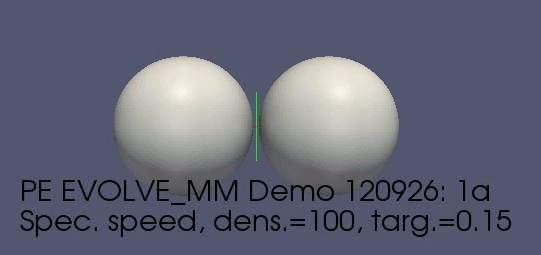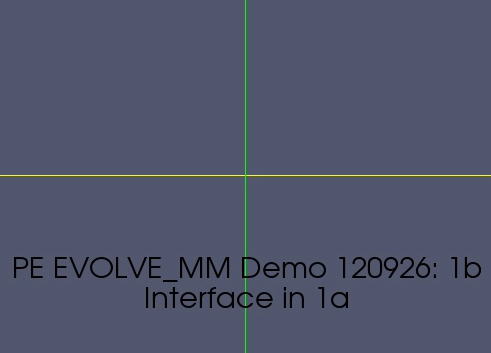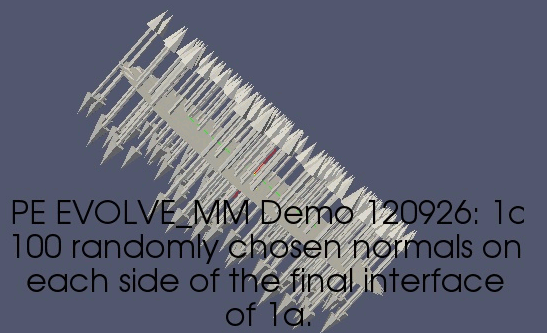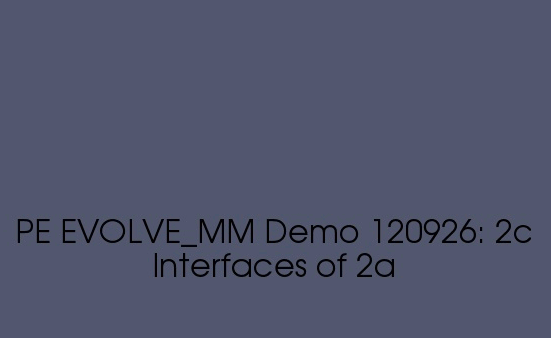
(Evolve for Multiple Materials, Focus on interface extraction)

|
EVOLVE MM (2012) (Evolve for Multiple Materials, Focus on interface extraction) |
See EVOLVE MM for more information on extraction.
Example: Two spheres growing together.

|

|

|
(Left image) Two spheres growing with speeds specified at their surfaces.
(Center image) The extracted interface between the two spheres as they grow into each other: the same interface elements (faces/triangles) are obtained for each sphere - it is a consistent interface. Note that the interface is flat (as expected), except for small fluctuations.
(Right image) The extracted interface of the final structure (tilted), from both sides; i,e, the triangles of each sphere that are in contact with triangles of the other sphere. The normals are shown (random sampling of 100 triangle normals on each side of the interface).

Example: Two spheres growing through a disk, into each other.

|

|

|
(Left image) Two spheres growing at specified speeds, into an intervening disk.
(Center image) A cut-away, tilted view of the evolution to show the three interfaces form and evolve.
(Right image) An explicit view of the three interfaces forming and growing during the growth of the spheres, viewed from a little to the side of the rightmost sphere. The third interface ()between the spheres) comes in towards the end of the simulation.

Some simulation details: Each example above consist of 15 time steps, each with a target displacement for the spheres in the normal direction of 0.01 (relative to their diameters of 0.4). By time step, we mean that starting with a surface mesh for each object: generate signed distances, smooth these distances, evolve the distance fields, smooth the evolved fields, extract the surfaces/interfaces, and finally generate the surface mesh for the next time step. These simulations ran in a about 10 minutes, depending quite a bit on the number of 3D image files saved. The simulations had O(10^6) nodes, and they were run in Ubuntu 12.04 (64-bit) in VM Fusion (4.1.3) on a (2011) MacBook Pro running Lion (Ubuntu VM uses 2 processors of the 4 available and 4 Gb of RAM). The code was FORTRAN (gfortran 4.6.3).
One important aspect of these results is that the extraction of the interfaces took about the same computer time as evolving the distance fields, or extracting surfaces. Extracting surfaces (level sets) is a well-developed level set technology, and the extractions took on the order of seconds.

PE Home
About PE
Contact PE
Hi-lited Work
AMR
EVOLVE MM
EVOLVE 3D
EVOLVE
PLENTE
3D-ICs